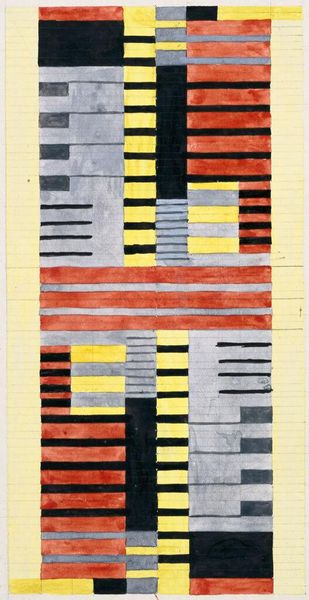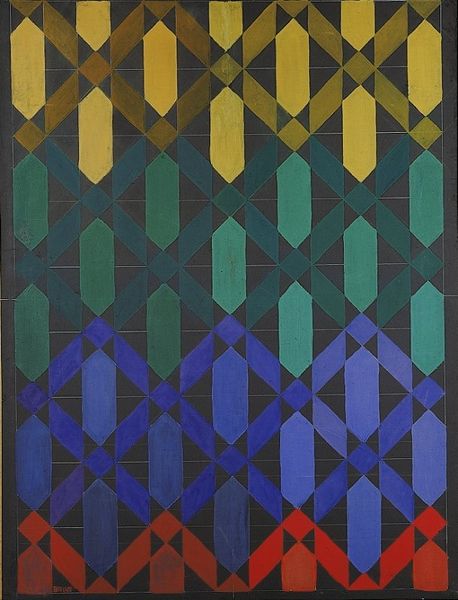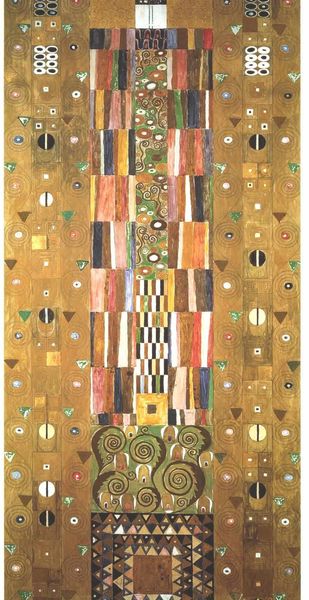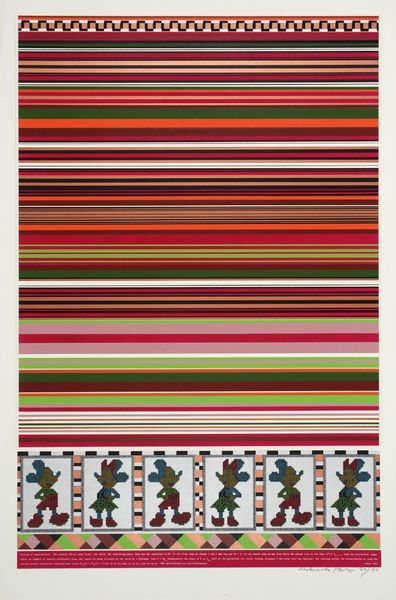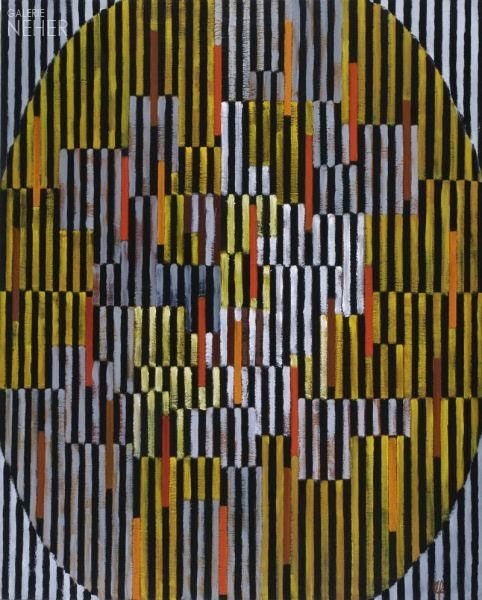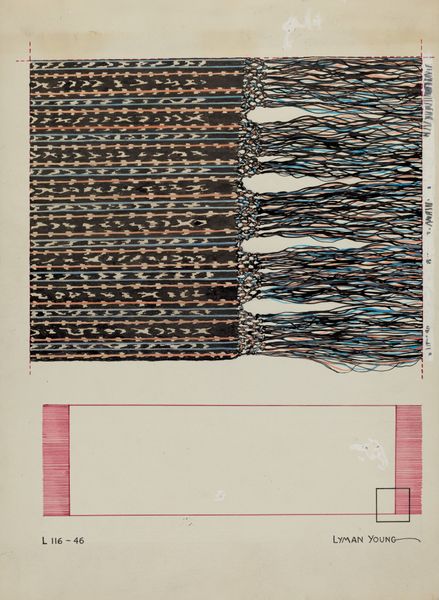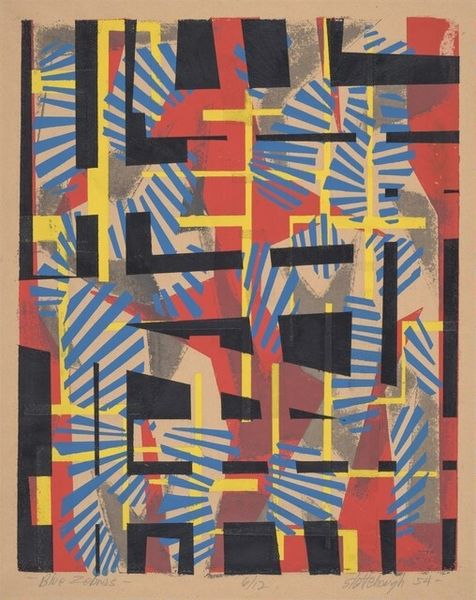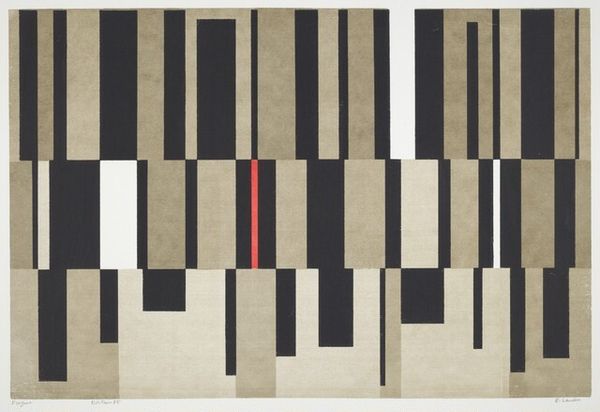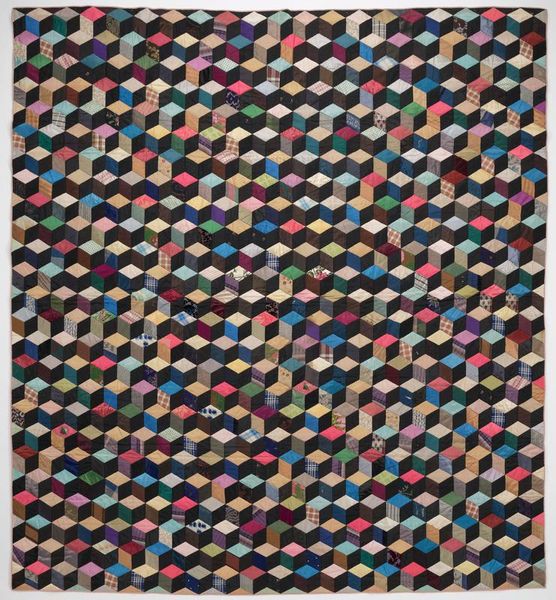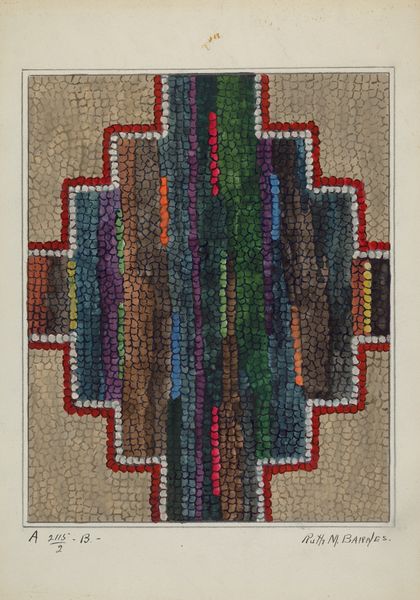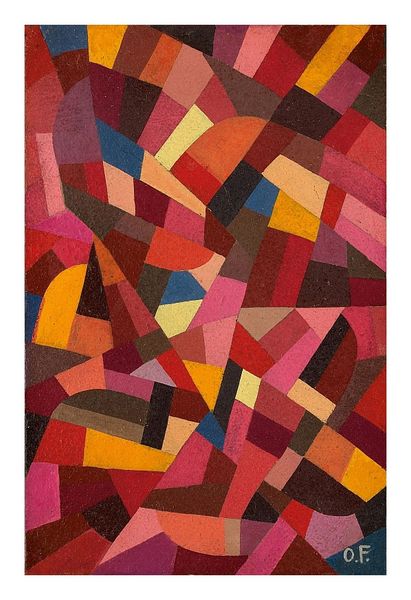
Copyright: Adolf Fleischmann,Fair Use
Editor: This is Adolf Fleischmann’s "#180", from 1959, made with acrylic paint. The vertical bars create a striking visual rhythm. What can you tell me about the material and its usage? Curator: Well, consider the post-war context. Fleischmann, associated with German Expressionism, embraces acrylic paint, a relatively new industrial product at the time. How does that affect its status as "art"? Acrylic moved artists beyond the traditional expectations associated with oil paints and watercolors, changing their approach to painting itself, no? Editor: I hadn’t thought of it that way! I guess I'm so used to seeing acrylic now that I don't really consider it a novelty. So the choice of acrylic instead of oils…how does that tie into the themes explored by German Expressionism? Curator: Think about it this way: Acrylic offered a certain immediacy, a clean, almost mechanical application that resonates, ironically, with the urge for expression in the face of mechanized society and mass production. He builds up layers to produce an almost vibrating circular field. How do those production decisions communicate meaning, and impact how we perceive art in general? Editor: That's a good point. This was the period of high modernism and people experimenting with industrial products, and pushing against traditional art forms. I understand how new materials influence art, that it opens it up to be more than what you paint but also what you're painting with. Curator: Precisely! And recognizing that the artist does more than just pick up materials; they engage with an entire industrial and social system! By looking closely at materials we reveal some larger structure. Editor: I can see that now. Focusing on the production choices made gives me a different, and arguably deeper, perspective.
Comments
No comments
Be the first to comment and join the conversation on the ultimate creative platform.
